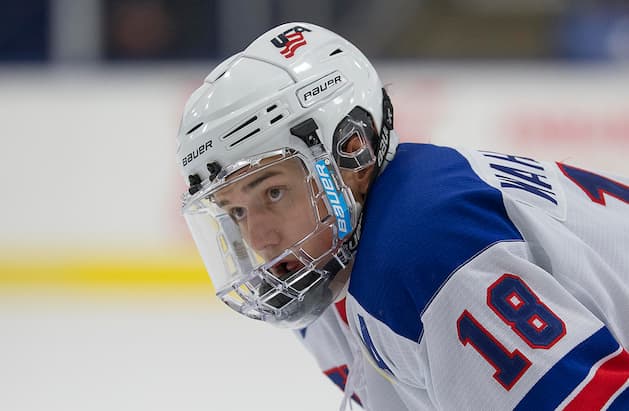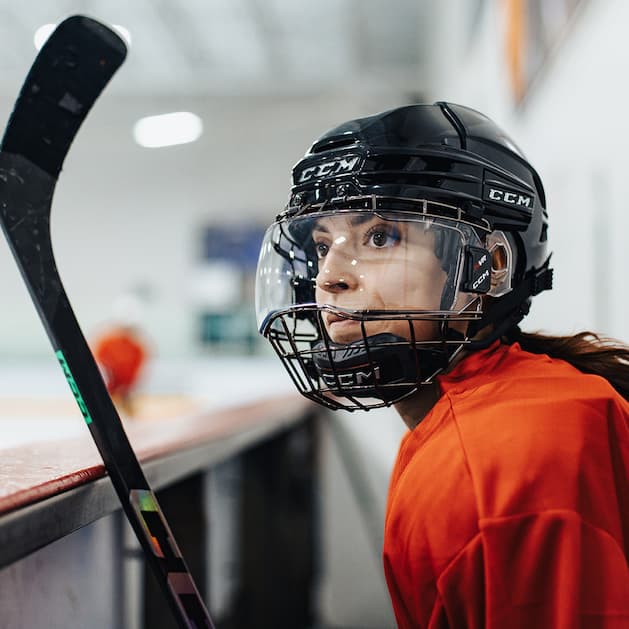Novices may wonder what stands between a hockey player and a high-speed puck flying toward their face. The answer lies in a small but powerful piece of gear — the helmet visor. More than just a clear shield, it’s your front-line defence against impact, flying debris and accidental sticks. A visor not only protects your eyes and face but also enhances visibility, allowing players to keep their focus sharp during intense gameplay. So, if you’re looking for a design that matches your game, here are some tips that will help you choose right.
Visor Types: Full, Half, or Hybrid?
Whether you’re skating into a fast break or defending the goal, enhance your vision and protect your eyes with a crack-resistant visor for hockey. Full, half and hybrid are the three basic types available. Each option offers distinct advantages depending on your style of play, comfort preference and desired level of protection. Additionally, understanding these differences helps you find the perfect balance between safety, visibility and performance on the ice.
Full Visors

A full hockey visor provides complete facial coverage, protecting everything from your eyes to your chin. It’s often made from high-impact polycarbonate that can withstand pucks, sticks and collisions. Full visors are popular among younger players and leagues that prioritize maximum protection. They prevent facial injuries and shield against wind and ice spray, making them ideal for defensive players or goalies who face constant contact. The downside? They can slightly reduce airflow and fog up, though anti-fog coatings and ventilation features now help solve that issue.
Half Visors
Also known as half shields, these cover only the upper half of the face — the eyes and nose — leaving the mouth area open. Favoured by professional and experienced players, half visors strike a balance between protection and breathability. They offer excellent vision and airflow, allowing players to communicate easily on the ice. However, they do leave the lower face vulnerable to sticks and pucks, so some players pair them with mouthguards for extra safety.
Hybrid Visors

For those looking for a middle ground, hybrid hockey visors combine the strengths of both styles. Typically, they feature a clear upper shield and a metal cage or extended lower guard for better protection without sacrificing visibility. This design offers superior facial coverage with improved airflow and reduced fogging compared to full hockey helmet visors. Hybrids are becoming increasingly popular among players who want comprehensive protection but still crave freedom of movement and clarity.
Lens Options
When choosing a hockey helmet visor, the lens type is just as crucial as the visor’s shape or coverage. Lens options vary in tint, coating and material quality, all of which influence your visibility, comfort and performance on the ice. Choosing the right lens can help you adapt to lighting conditions and reduce distractions during fast-paced play.
Clear Lenses
The most common option, clear lenses offer unobstructed vision and are ideal for indoor rinks with consistent lighting. They provide maximum clarity and are perfect for players who value accuracy and focus without visual distortion.
Tinted Lenses

Tinted or smoke lens options reduce glare from bright arena lights or sunlight, making them great for both brightly lit rinks and outdoor games. The subtle tint can also help reduce eye strain during long matches, keeping your focus sharp.
Mirrored Lenses
For those who want style and performance, mirrored lenses reflect light and cut glare even more effectively than tinted ones. They’re often used by players in outdoor or high-glare environments, though they can slightly darken vision indoors.
Photochromic and Polarized Lenses
Advanced options like photochromic lenses automatically adjust to lighting changes, darkening under bright light and clearing in dim conditions. Polarized lenses, on the other hand, minimize glare from reflective surfaces like ice, enhancing contrast and depth perception.
What to Look for in a High-Quality Visor: Features Checklist

When it comes to choosing a high-quality visor for hockey, attention to detail makes all the difference. The best visors combine advanced materials, smart design and comfort-focused features to keep you protected and performing at your best. Here’s a checklist of key features to look for before making your choice.
Impact Resistance
A premium visor should be made from high-impact polycarbonate or similar materials designed to withstand pucks, sticks and falls. This ensures durability and long-lasting protection game after game.
Anti-Fog and Anti-Scratch Coating
Clear vision is critical on the ice. Look for visors with double-sided anti-fog coatings to prevent moisture build-up and anti-scratch layers to maintain optical clarity even after tough matches.
Optical Precision
Choose a visor that offers distortion-free visibility. High-quality lenses provide a true, undistorted view of the puck and surroundings, giving you a competitive edge during fast plays.
UV Protection
For outdoor players, UV-resistant visors shield your eyes from harmful rays while maintaining transparency and durability.
Ventilation and Airflow Design
Good airflow helps reduce fogging and keeps you cool. Some visors feature integrated vents or curvature that promotes air circulation.
Easy Installation and Compatibility
Make sure the visor fits securely on your helmet model and allows for simple attachment or adjustments.
Certification and Safety Standards
Finally, check that your visor meets safety certifications such as CSA or HECC approval. This guarantees tested, professional-grade protection for your face and eyes every time you hit the ice.


